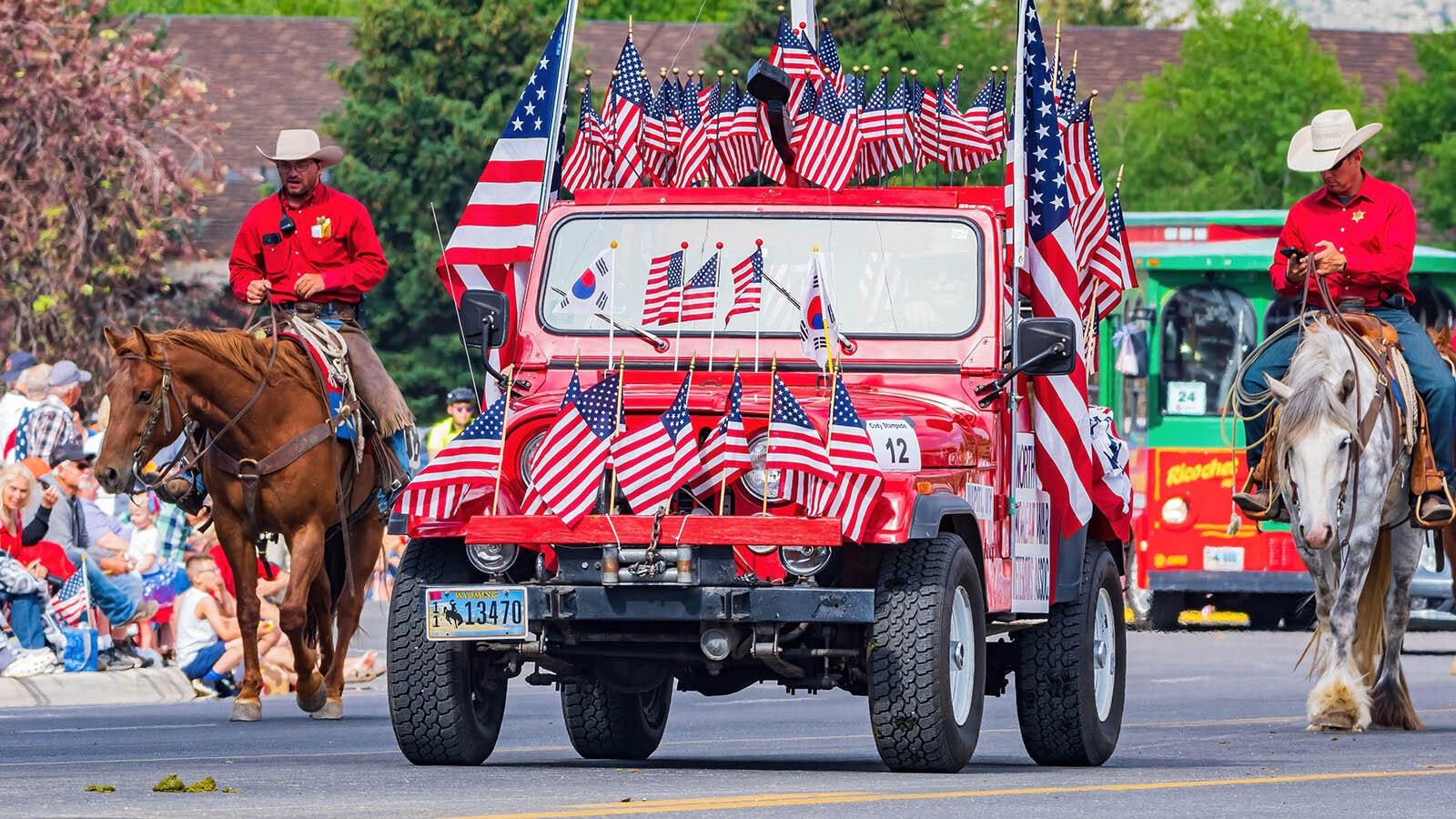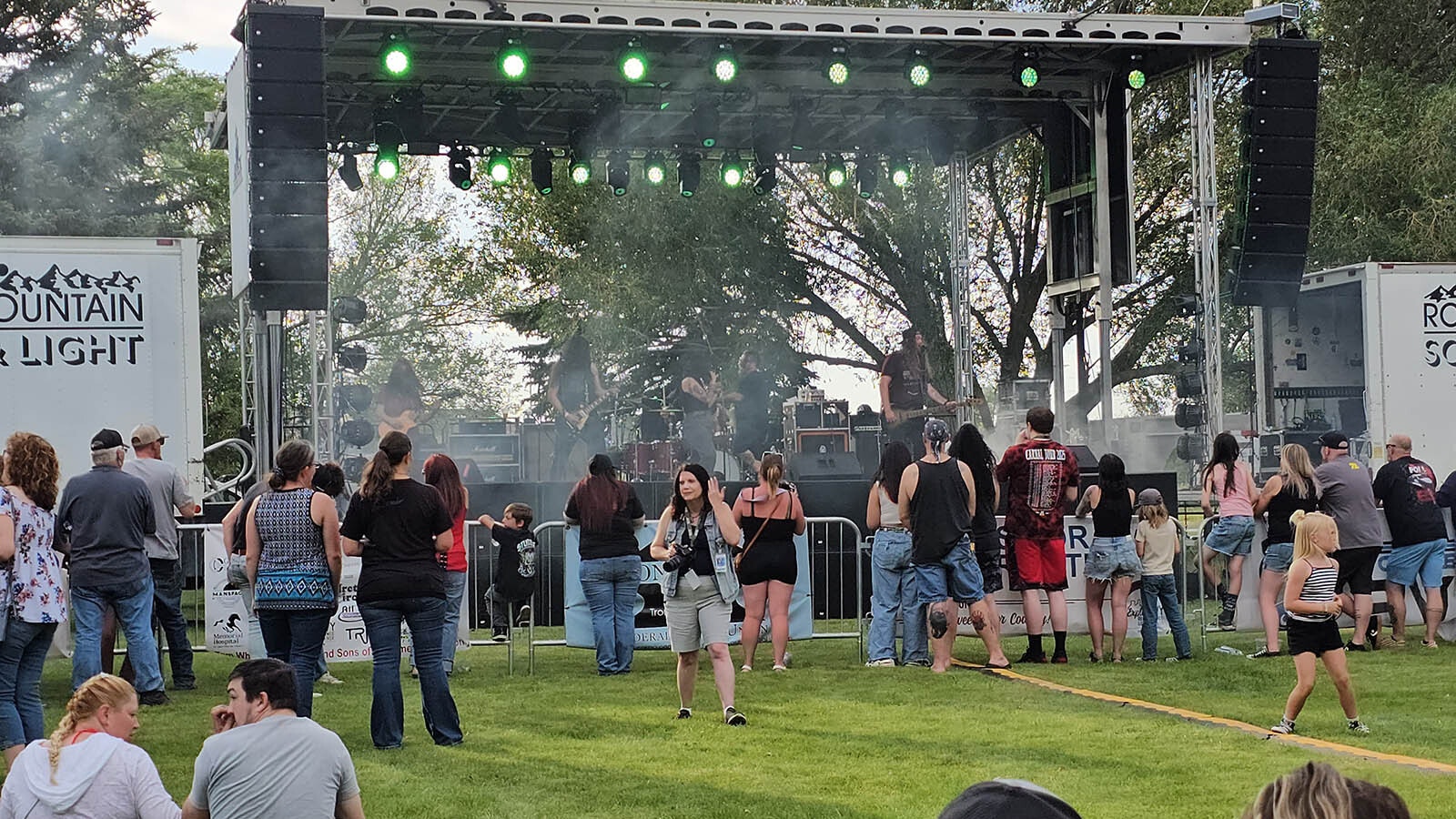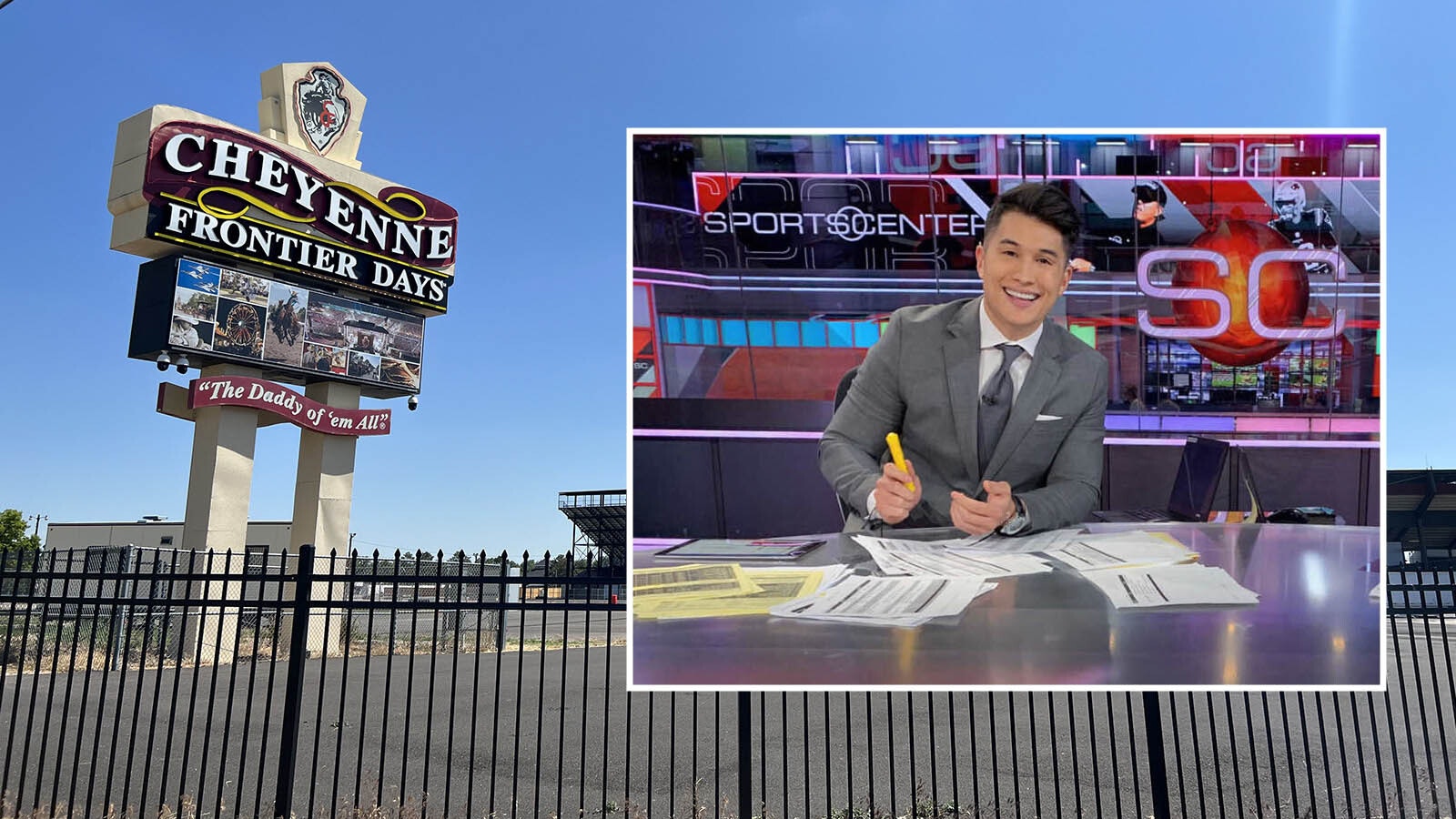The horses’ hooves kicked up small puffs of dust. Dry grass crackled as they stepped on it, and occasionally a branch or twig snapped, but otherwise it was quiet as Robert Widdowfield and Henry H. “Tip” Vincent rode along the base of Elk Mountain and then up the Rattlesnake drainage.
They wanted it to appear that they were looking for cattle, but they were on a much harder to find trail.
Two days earlier a band of ruffians loosened railroad iron from the Union Pacific track near Como Bluff, at a place called Robbers Roost. They intended robbing the train, but an alert track section man saw the rail damage, thwarting their effort. The men rode west and lost themselves in the rugged landscape of Elk Mountain.
Robert Widdowfield was a Carbon County Deputy Sheriff living in the coal mining town of Carbon – a place established ten years earlier in 1868 when the Union Pacific laid its route across the landscape.
On August 19, 1878, Widdowfield and Vincent, who was a detective hired by the railroad, had nearly topped out on a ridge that separated the Rattlesnake drainage with the one leading toward Pass Creek, when they saw the remains of a small campfire.
Just minutes earlier, the gang of men using that fire had a warning from a sentry on duty down the hillside.
At the campfire Widdowfield stepped off his horse, held his hand toward it, and realized it was still warm. He knew the men they pursued weren’t far away. He turned and may have said as much to his companion.
If so, it was the last thing he said as a bullet from a gun wielded by a hidden outlaw – most likely Frank Tole – tore into him, killing him instantly. Vincent reacted immediately, spinning his horse and heading upcountry toward the pass. He didn’t get far, at most a few hundred yards.
The outlaws – now with a murder on their hands – fired at him, striking him more than once including a fatal shot in his back. He tried to defend himself, to no avail and he died.
It was the first double killing of lawmen in Wyoming territory and set Carbon County on a path that is unmatched in terms of grisly crimes and their aftermath.
On the 150th anniversary of the killing of Vincent and Widdowfield, a group of history seekers led by the Grand Encampment Museum, including members of Widdowfield’s family, a great-grandson of a Carbon County Sheriff who was involved with the case, and ranch hands stood at the site of their murders.
The location where Widdowfield and Vincent died is marked with a stone, cut deeply with information about them and the date of their murders. It is on private land, once a part of the Foote Ranch, and is now owned by Dr. Fred Eshelman, a man as interested in this history as his employees and the museum board members.
High Plains Press of Glendo published Mark Miller’s biography about Big Nose George Parrott. Miller is a former state archaeologist, and he led the visit to the historic site, organized by the Grand Encampment Museum.
Miller not only wrote the book, but he had also earlier engaged in archaeological study directly related to the story. And his roots in Carbon County are so deep that his great-grandfather had been involved, providing a direct link to the history.

Shots Fired
Back to 1878. On August 19, L.M. Hampton, a surveyor working in the area, heard the shots that downed Vincent and Widdowfield. He would share this information days later with Carbon County Undersheriff James Rankin and UPRR Agent James Adams, who had set out to find the missing lawmen.
The landscape around Elk Mountain is extensive and rugged. It might have taken days or even weeks to find the slain lawmen if the search party had not encountered the surveyor and heard his story about the gunshots.
Other men joined the hunt for the missing lawmen, including Robert Foote, the owner of the ranch at the base of Elk Mountain. The search took time but finally the two lawmen’s bodies were found on August 27, 1878.
By then they were putrid, having lain out in the late August sun for more than a week. The victims were taken to Rawlins, but later Widdowfield was buried by his family in Carbon, and Vincent, who had no apparent relatives, was buried in the Rawlins cemetery.
The trail of the killers grew cold. But the Carbon County authorities did not give up.
The men who attempted the attack on the train at Percy on Aug. 17, 1878, included Big Nose George Parrott, the supposed leader of the gang, Dutch Charley Burris, Jack Campbell, Tom Reed, Frank James, Frank Tole, John Wells, and Sim Wan. They were known as the Powder River Gang. Some historians believe Frank James was the brother of the well-known Missouri outlaw Jesse James; other historians aren’t quite so sure the Frank James in Wyoming is related to Jesse.
Catching the Killers
On New Year’s Eve 1878, authorities apprehended Dutch Charley in Green River. They put him on a train and took him to Laramie, turning him over to N. K. Boswell, who would soon be sworn in as the new Albany County Sheriff. On Sunday Jan. 5, 1879, the lawmen put Dutch Charley on the train, this time to take him to Rawlins to stand trial.
Widdowfield’s relatives were waiting when the train reached Carbon. They overpowered the lawmen with Burris, pulled him from the train, and hanged him.
Big Nose George Parrott eluded the law until April 1880 when he was apprehended in Miles City, Montana. Carbon County Undersheriff Jim Rankin went to Montana to retrieve the prisoner, traveling south to Nebraska and then east into Wyoming.
Everything worked well until they got to Carbon. When the train stopped, the townspeople, having heard about Parrott, again boarded the train and overpowered the authorities. As before they took the prisoner to a pole where they intended to hang him, as they had Dutch Charley.
But Parrott started singing. Some thirty minutes later, with the details of the crime outlined to the satisfaction of the townspeople, Parrott was put back on the train, and continued to Rawlins.
He stood trial in November 1880, was found guilty and sentenced to hang. He was the only man involved in the killing of Vincent and Widdowfield to stand trial.
His execution was slated for April 9, 1881. In January a new sheriff took office in Carbon County. I.C. “Ike” Miller had defeated the undersheriff James Rankin in the fall election. When he took office, Miller let it be known he would enforce a concealed weapon law that was already on the books in the county.
As plans were made for the execution, Miller also directed that only people invited would be allowed to attend the execution making it a closed and private event.
The days ticked closer to the planned hanging, until the evening of March 22 when all hell broke loose.
Parrott had somehow obtained a small pocketknife and used it to break free of his shackles. Then when the opportunity presented itself that night, he attacked jailer Bob Rankin. Rankin’s wife Rosa heard the commotion and came to her husband’s aid, stopping Parrott’s attempt to escape.
The townspeople soon learned of the attempted jail break, and although Parrott had once again been restrained, a mob broke through the front door of the jail and demanded the prisoner. Before the night ended, the mob hanged Parrott from a telegraph pole along Front Street.

Examination of a Cadaver
Then the grisly part of the story began. Union Pacific Doctor John Osborne took possession of the body after the coroner’s inquest – which of course determined the death had been due to strangulation. With Dr. Thomas Maghee and Lillian Heath, a young woman who was learning medicine, Dr. Osborne began a study of the corpse.
First, he made a death mask (a plaster of paris cast of the outlaw’s head). Later he cut into the man’s skull, taking off the skull cap to study the man’s brain. Then Osborne skinned – and tanned – enough of George’s body to have enough hide to make himself a pair of shoes.
Osborne would later be elected governor of Wyoming and wore the shoes at the time of his inauguration.
Lillian Heath ended up with the skull cap for many years; at one time using it as a door stop. Parrott’s bones were placed in a whiskey barrel and buried in the street. They would be found decades later and determined to be Parrott’s when the skull piece in the barrel matched the skull cap Lillian Heath had kept.
Mark Miller and his team when he served as state archaeologist, undertook more than one project connected with the story of Big Nose George. They studied the Robber’s Roost site and the bones of Big Nose George that came from the whiskey barrel.
Miller wrote of Parrott, but he firmly believes the attention should focus not on the outlaws, but on the two lawmen who died in a hail of gunfire on that hot August day in 1878. If Mark Miller, the grandson of former Carbon County Sheriff I.C. Miller has his way, there will someday be a monument to Robert Widdowfield and Tip Vincent.
That would counter-balance the other part of the story – and the fact that the death mask and the shoes Osborne had made of Big Nose George’s hide are on display at the Carbon County Museum.





